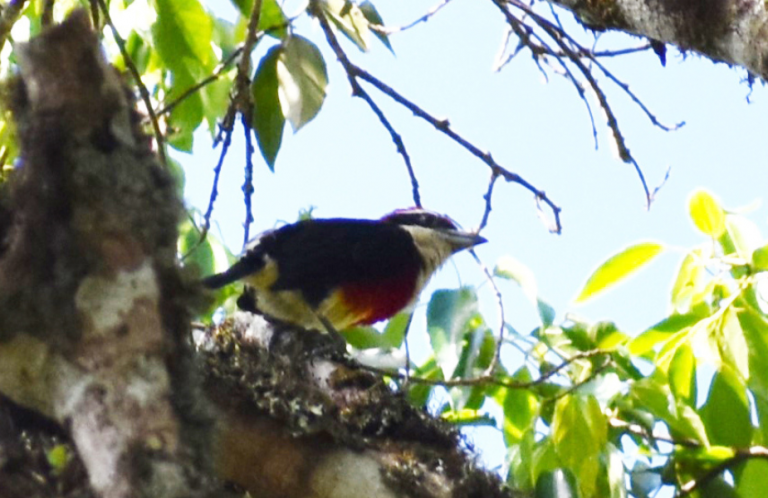At Home in the Cold: An Intro to the World of Winter Birds
Sure, winter can be dark, cold, and barren in the northern U.S., but that doesn't mean it isn't a great time to see birds.
After all, winter heralds the arrival of Dark-eyed Juncos, the famous snowbirds, and other visitors such as Snowy Owls and Evening Grosbeaks. And they aren't alone. Plenty of other cold-adapted resident species — Northern Cardinals and Blue Jays, to name two — stay put during winter months.
Not only are birds active in winter — they can be much easier to spot, too. With no leaves on many trees, fewer people, less noise, and a monochrome landscape (if there's snow), winter birds often seem to pop into view without much effort by those seeking them.
Even if you are unwilling or unable to venture out in the cold, winter birds aren't off-limits. Snow can draw birds to backyard feeders en masse, making them easy to observe from the warmth of our homes.
But, as anyone who has spent time observing winter birds knows, just seeing these birds does little to explain their presence. It raises some tough questions: How can birds that weigh less than an ounce survive sub-zero temperatures night after night? What do they eat? Where do they sleep?
Luckily, we've got the answers to these questions and others below. Take a look and tell us what your favorite winter birds are in the comment section below.

Which birds are commonly seen in the winter?
Given the size of the U.S., there is no one-size-fits-all answer; however, there are common winter birds that are observed widely. These include the Northern Cardinal, Dark-eyed Junco, Mourning Dove, Downy Woodpecker, Black-capped Chickadee, White-breasted Nuthatch, American Goldfinch, House Finch, House Sparrow, and Blue and Steller's Jays.
In addition, regional food shortages sometimes send “irruptive” waves of birds southward to the lower 48 states during winter months. These sporadic visitors include Snowy Owls, Evening Grosbeaks, Pine Grosbeaks, Red and White-winged Crossbills, and Common Redpolls.
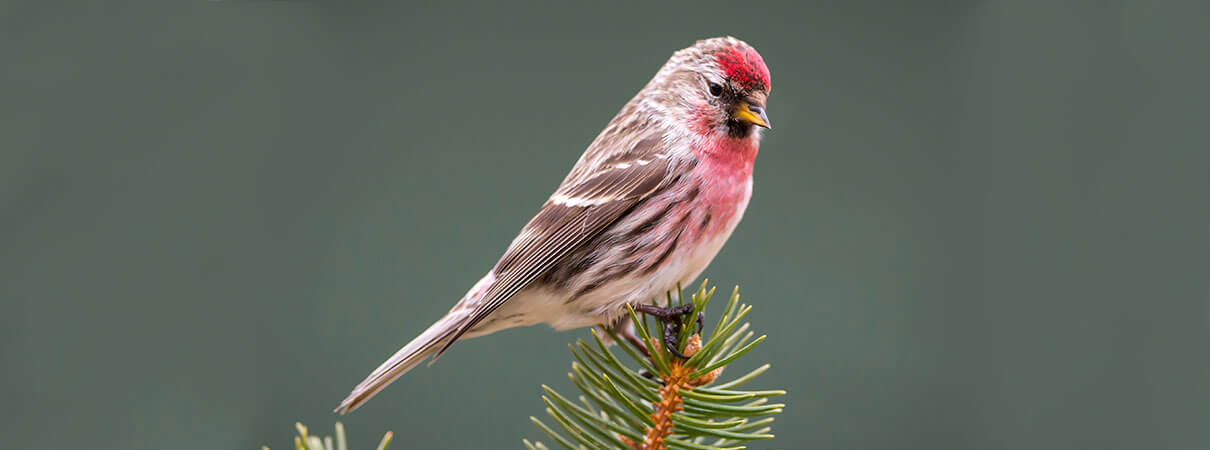
How do winter birds stay warm?
Unlike humans, who rely on heated structures and heavy layers to stay warm, birds do fine by themselves — even in extreme circumstances. Take, for example, Black-capped Chickadees. These small birds, which weigh less than half an ounce, maintain body temperatures at 100 degrees Fahrenheit even when temperatures dip well below freezing. How do they do it? Birds rely on a few key strategies and tools to defy the odds:
• Insulation: Most winter birds utilize a set of super-warm downy feathers to keep the cold at bay. These feathers, which are usually hidden, trap pockets of warm air next to birds' bodies. Fluffing their feathers helps birds maximize this advantage, while also giving them a plump appearance.
• Eating: During the winter, birds stay busy looking for high-fat and high-protein foods during the day. This builds up fat reserves they burn during the night to stay warm. Being successful at the “fat reserves” game requires significant food consumption: Chickadees are known to eat more than 35 percent of their body weight every day.
• Shivering: Birds have extremely high metabolic rates and shivering helps them generate even more warmth during periods of colder weather.
• Countercurrent heat exchange: Birds' legs, which in many species are devoid of feathers, are exposed to intense cold. Rather than circulate the blood in their legs throughout their bodies, waterfowl isolate blood within their legs, minimizing its cooling effect on internal organs. Even so, it's still common to see these birds standing on one leg to conserve heat.
• Communal roosts: By huddling together, birds can share heat and help each other stay warm. This tactic is used frequently by smaller birds like finches, nuthatches, wrens, bluebirds, and others.

Where do birds sleep in the winter?
On frigid nights, effective roosting sites can mean the difference between life and death for birds. Not surprisingly, these sites are carefully chosen. Birds have evolved a variety of strategies to avoid the elements. For example, Blue Jays and Northern Cardinals take refuge in dense evergreen foliage; finches roost together on coniferous trees, but will sometimes burrow and create sleeping hollows in snow; woodpeckers, titmice, and nuthatches prefer to roost in tree cavities. Roosting in protected areas has the added benefit of providing security from predators like owls and foxes.
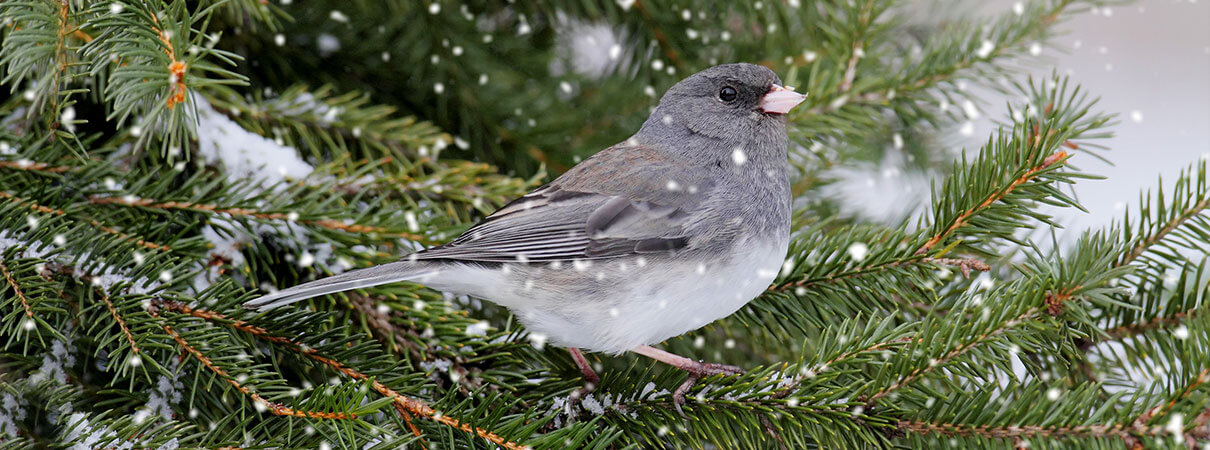
Do birds freeze to death?
Despite their wonderful natural defenses, birds remain vulnerable to freezing weather. The impacts of intense cold are complex, but there is no question that birds do indeed succumb to frigid temperatures. Mortality rates depend upon the intensity of the freeze, how long it lasts, and the birds' condition. Death isn't the only danger cold poses to birds: Frost bite can also take a toll: There are well-known instances of Mourning Doves losing tips of their toes, for example. In addition, sudden early cold spells may also interrupt the first feather molt in young birds hatched in late summer.
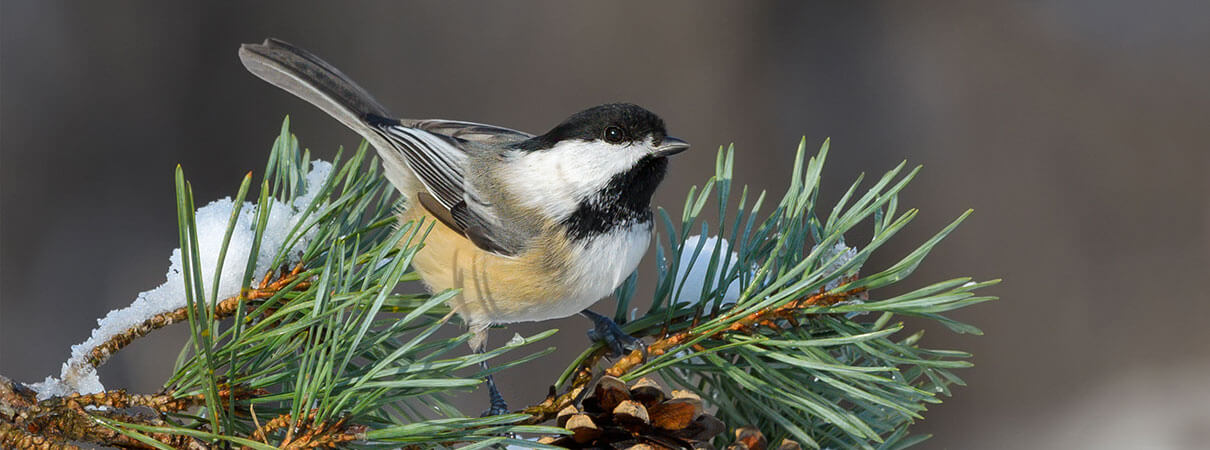
What do birds eat in winter?
At first glance, a wintry landscape may appear devoid of nutrition. But birds are extremely resourceful when it comes to finding food.
• Sapsuckers tap into the sweet sap flowing under tree bark, leaving sap wells for other birds to feed from.
• Chickadees, nuthatches, and other birds are able to locate and eat dormant and larval insects by carefully inspecting crevices and cracks in tree bark.
• Blue Jays, waxwings, Hermit Thrushes, Yellow-rumped Warblers, and American Robins feed on the berries of junipers, honeysuckle, holly, and other plants.
• Jays, titmice, finches, and other birds feast upon fallen acorns and pine nuts.
Seeds, grain, carrion, and small mammals provide additional cold-weather food sources for a variety of bird species.
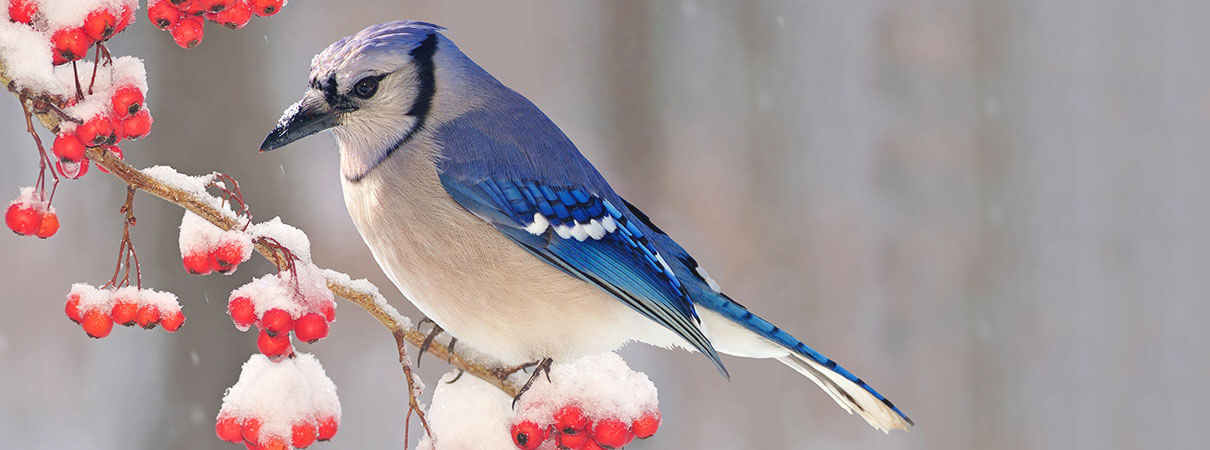
Where can I find birds in the winter?
Because birds are so well adapted to the cold, they can be found in many of the same places you might look during other seasons. Backyards, local parks, and wildlife refuges are good places to search. Unfrozen ponds, lakes, and rivers often attract waterfowl, sometimes in large flocks. If still in doubt, eBird is a great way to find out where other birders are having luck.

What dangers do birds face in the winter?
Apart from the cold, in winter, birds face many of the same dangers they do during the rest of the year. This includes outdoor cats, which kill approximately 2.4 billion birds each year in the U.S., and collisions with glass, which claim up to 1 billion birds each year in the U.S. In addition, habitat loss continues to devastate bird populations.
The combined effect of these threats and others is staggering. In total, it's estimated that 3 billion North American birds have been lost since 1970.
Another winter danger, but one that benefits birds: Feeders indirectly attract raptors such as the Cooper's Hawk – birds that feed on the birds at the feeder. Although some viewers find a hawk attack disturbing, a positive spin is that feeders also help raptors weather winters.

How can I help birds in the winter?
Birds can survive winter without human assistance, but when the snow piles high or the temperatures drop, our help can make a difference. There are several easy things you can do for birds in winter.
• Stock birdfeeders with suet, peanuts, and black oil sunflower seeds. These high-energy and protein-filled foods help birds survive cold nights.
• Scatter seeds in sheltered areas. Not all birds come to feeders. For those that don't, like Dark-eyed Juncos, consider sprinkling seed under bushes and in thickets.
• Plant native trees and shrubs that bear fruit or provide seeds in winter. Native plants benefit many wildlife species and can also provide shelter for birds.
• Provide roosting boxes or leave dead trees standing. If a dead tree poses no danger to humans, it can offer much-needed food (in the form of insects, spiders, and other arthropods) and shelter to birds and other wildlife.
• Make water available. Birds need to stay hydrated year-round. A heated birdbath can be useful, but make sure to add rocks or other objects during winter so that birds can drink without getting wet, which could be fatal.
• Report what you see. By uploading backyard bird observations to Project FeederWatch, you can help monitor changes in species abundance and winter range over time. Your data helps researchers better understand bird biology, potentially aiding in future conservation efforts.
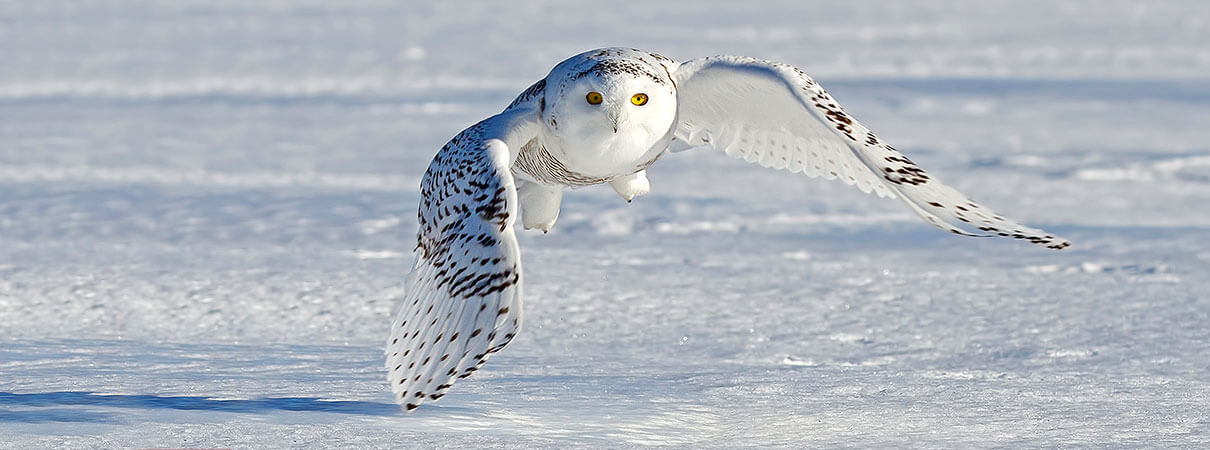
How can I learn more about helping birds?
Visit ABC's Bird-friendly Life page for tips on ways to keep birds safe by reducing glass collisions, keeping cats indoors, creating bird-friendly gardens, and much more.








































